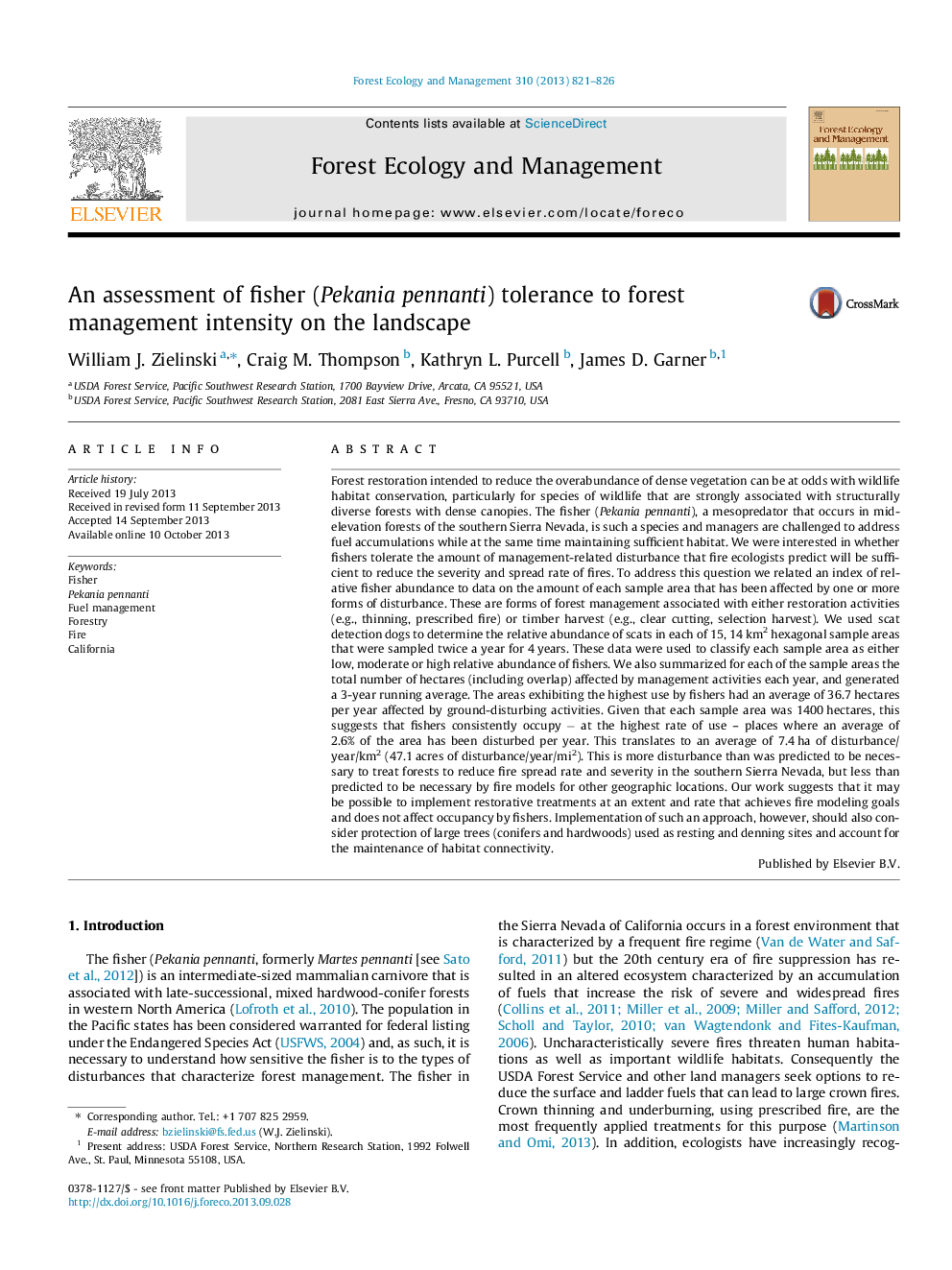| کد مقاله | کد نشریه | سال انتشار | مقاله انگلیسی | نسخه تمام متن |
|---|---|---|---|---|
| 6543879 | 159212 | 2013 | 6 صفحه PDF | دانلود رایگان |
عنوان انگلیسی مقاله ISI
An assessment of fisher (Pekania pennanti) tolerance to forest management intensity on the landscape
دانلود مقاله + سفارش ترجمه
دانلود مقاله ISI انگلیسی
رایگان برای ایرانیان
کلمات کلیدی
موضوعات مرتبط
علوم زیستی و بیوفناوری
علوم کشاورزی و بیولوژیک
بوم شناسی، تکامل، رفتار و سامانه شناسی
پیش نمایش صفحه اول مقاله

چکیده انگلیسی
Forest restoration intended to reduce the overabundance of dense vegetation can be at odds with wildlife habitat conservation, particularly for species of wildlife that are strongly associated with structurally diverse forests with dense canopies. The fisher (Pekania pennanti), a mesopredator that occurs in mid-elevation forests of the southern Sierra Nevada, is such a species and managers are challenged to address fuel accumulations while at the same time maintaining sufficient habitat. We were interested in whether fishers tolerate the amount of management-related disturbance that fire ecologists predict will be sufficient to reduce the severity and spread rate of fires. To address this question we related an index of relative fisher abundance to data on the amount of each sample area that has been affected by one or more forms of disturbance. These are forms of forest management associated with either restoration activities (e.g., thinning, prescribed fire) or timber harvest (e.g., clear cutting, selection harvest). We used scat detection dogs to determine the relative abundance of scats in each of 15, 14Â km2 hexagonal sample areas that were sampled twice a year for 4Â years. These data were used to classify each sample area as either low, moderate or high relative abundance of fishers. We also summarized for each of the sample areas the total number of hectares (including overlap) affected by management activities each year, and generated a 3-year running average. The areas exhibiting the highest use by fishers had an average of 36.7Â hectares per year affected by ground-disturbing activities. Given that each sample area was 1400Â hectares, this suggests that fishers consistently occupy â at the highest rate of use - places where an average of 2.6% of the area has been disturbed per year. This translates to an average of 7.4Â ha of disturbance/year/km2 (47.1Â acres of disturbance/year/mi2). This is more disturbance than was predicted to be necessary to treat forests to reduce fire spread rate and severity in the southern Sierra Nevada, but less than predicted to be necessary by fire models for other geographic locations. Our work suggests that it may be possible to implement restorative treatments at an extent and rate that achieves fire modeling goals and does not affect occupancy by fishers. Implementation of such an approach, however, should also consider protection of large trees (conifers and hardwoods) used as resting and denning sites and account for the maintenance of habitat connectivity.
ناشر
Database: Elsevier - ScienceDirect (ساینس دایرکت)
Journal: Forest Ecology and Management - Volume 310, 15 December 2013, Pages 821-826
Journal: Forest Ecology and Management - Volume 310, 15 December 2013, Pages 821-826
نویسندگان
William J. Zielinski, Craig M. Thompson, Kathryn L. Purcell, James D. Garner,